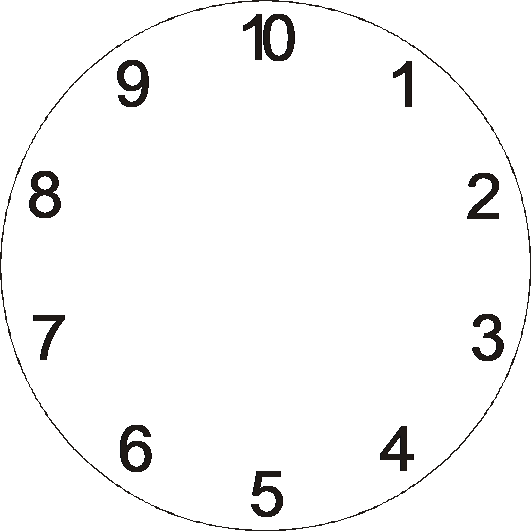Balance of Realities - Dot is hidden in the alif and zero (cypher) precedes one
Dot is hidden in the alif and zero (cypher) precedes one
When a writer starts to write something with the nib of his pen, the first thing that comes into existence on the paper is a dot. Thus, although apparently the alif has no relationship with the dot, its foundation and constitution is based on it. For instance, while writing the alif, the moment the nib of the pen touches the surface of the paper, a dot instantly comes into existence. Thereafter, the movement of the pen brings into existence a string of dots. Letters are formed by bending and curving them. This is true of all writing and painting. As for how the zero precedes one in the order of numbers, we furnish some proofs in the following:

First proof: If we draw a circle on paper, place a zero on it somewhere, considering it the starting point and then divide the circle into ten equal parts from the right, then we have to write the number ten on [the other side of] the initial zero, and in order to do so it is enough to write the number one only, since the zero already exists. This shows that the zero precedes the number one. Similarly, if we pass the zero and write one by the side of the following number (i.e. one), it will become eleven, and in this way there will be no mistake in the order of numbers. Thus it is a correct principle to say that the zero precedes one. For if we place ordinal things in their respective order on a circle, then the last will be found at the back of the first. For instance, if we place the Arabic alphabet respectively on a circle, then the letter “ya” will be at the back of “alif”. This shows the alphabet begins with the alif and ends with ya.
Second proof: Zero means “nothing” or “non existent”. The number one means “something” or “existent”. Therefore the non existent should precede the existent.
Third proof: Contrary to the above-mentioned example in which the zero is conceived to be the starting point, if we start the numbers with one, which measurable thing would it denote? When we write two after it and look carefully (we will come to know that) the difference between one and two will only be one, which belongs neither to one nor to two. It does not belong to one because every consecutive number shows the quantity (of the numbers) preceding it. Nor does it belong to two because the difference is one and the number is two. Thus it is wrong not to start with the zero.
Fourth proof: The need of the zero to precede one is felt when the distance of a thing that does not have edges has to be shown in numbers. For, if it has edges the initial edge is considered as the zero.
Fifth proof: The order of the numbers, which is in the units, is also in the tens. If a zero is added in the beginning to make the tens, then the zero has to be in the beginning of the units as well.
From the above mentioned proofs it is established that in the order of numbers zero comes first, even though sometimes it is not actually written.
| Chapter Index | Previous Chapter | Next Chapter |
